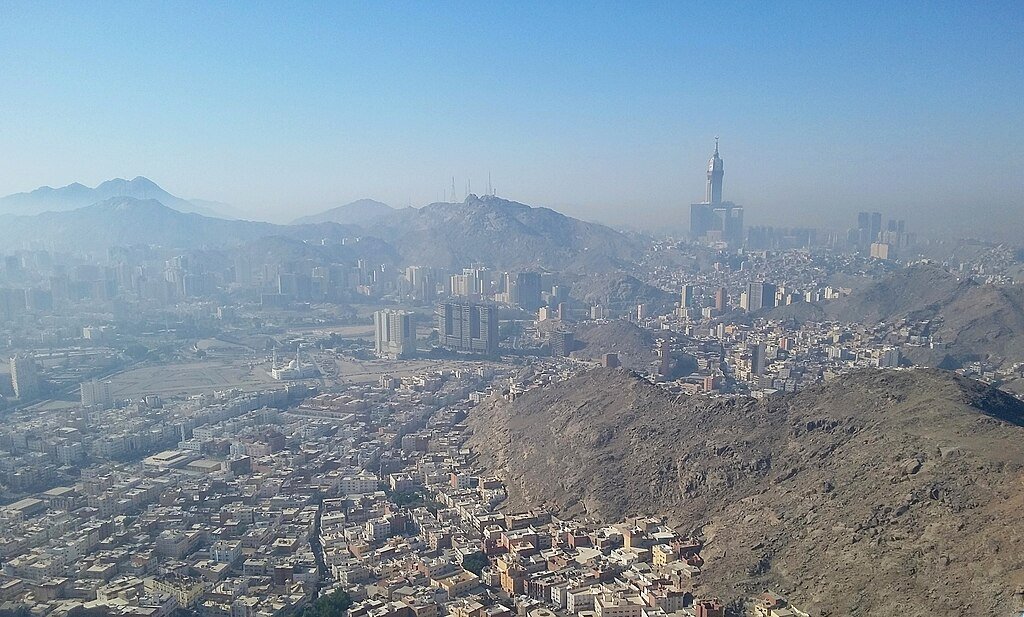Religious Significance :
The Kaaba :
At the heart of Mecca lies the Kaaba, a cube-shaped building in the center of Al-Masjid al-Haram (the
Grand Mosque). The Kaaba is considered the House of Allah (God) and is the direction (Qibla) towards
which Muslims around the world face during their prayers (Salah).
According to Islamic tradition, the Kaaba was originally built by Prophet Ibrahim (Abraham) and his son
Prophet Ismail (Ishmael) as a house dedicated to the worship of Allah.
Hajj and Umrah :
Hajj is an annual pilgrimage that takes place in Mecca and is one of the Five Pillars of Islam. It is
obligatory for all Muslims who are physically and financially able to perform it at least once in their
lifetime.
Umrah, also known as the lesser pilgrimage, can be performed at any time of the year and involves some
of the same rituals as Hajj, such as Tawaf (circumambulation around the Kaaba) and Sa’i (walking between
the hills of Safa and Marwah).
Millions of Muslims from around the world visit Mecca each year to perform Hajj and Umrah, making it a
unique place of spiritual unity and devotion.
Prophet Muhammad’s Birthplace :
Mecca is the birthplace of Prophet Muhammad (peace be upon him), who was born in 570 CE. His early life,
the beginning of the revelation of the Quran, and the initial spread of Islam are all deeply rooted in
this city.
Historical Background :
Ancient History :
Mecca has been a center of trade and pilgrimage for centuries, even before the advent of Islam. It was
known as a hub for caravan trade routes and had deep spiritual significance for various tribes who
visited to worship at the Kaaba.
The city’s status as a pilgrimage site made it a place of cultural and economic importance in the
Arabian Peninsula.
The Revelation of the Quran :
The revelation of the Quran to the Prophet Muhammad (peace be upon him) began in Mecca in the Cave of
Hira on Mount Nur. The first verses revealed were from Surah Al-‘Alaq. This event marks the beginning of
Islam.
After facing persecution from the Quraysh tribe in Mecca, the Prophet and his followers migrated to
Medina in 622 CE, marking the start of the Islamic calendar (Hijri calendar). The Prophet eventually
returned to Mecca in 630 CE, leading to the peaceful conquest of the city and the cleansing of the Kaaba
from idol worship.
Key Sites in Mecca :
Al-Masjid al-Haram (The Grand Mosque) :
The Grand Mosque is the largest mosque in the world, encompassing the Kaaba. It can accommodate millions
of worshippers, especially during Hajj and Ramadan.
The mosque also includes Maqam Ibrahim (the Station of Abraham), Zamzam Well, and the Hajar al-Aswad
(Black Stone)—all of which have deep significance in Islamic rituals and history.
Jabal al-Nur (Mount of Light) :
This mountain is home to the Cave of Hira, where the Prophet Muhammad (peace be upon him) received the
first revelation from the angel Jibril (Gabriel). The cave is a pilgrimage site for Muslims who wish to
reflect on the spiritual history of Islam.
Mina, Arafat, and Muzdalifah :
These sites are integral to the Hajj pilgrimage :
Mina: The location where pilgrims spend the night during Hajj and participate in the ritual of Ramy
al-Jamarat (stoning of the devil).
Mount Arafat :
The site of the Day of Arafah, considered the most important day of Hajj, where pilgrims
gather for supplication.
Muzdalifah :
An area where pilgrims collect pebbles for the stoning ritual and spend the night under the
open sky.
Modern Mecca :
Expansion and Development :
To accommodate the millions of pilgrims visiting annually, Mecca has undergone extensive development,
including the expansion of Al-Masjid al-Haram, construction of large hotels, and infrastructure like the
Mecca Metro to facilitate movement between holy sites.
Abraj Al Bait, a skyscraper complex that includes the Makkah Royal Clock Tower, overlooks the Grand
Mosque and offers accommodations, shopping, and dining options for visitors.
Cultural and Economic Role :
As the spiritual center of Islam, Mecca’s economy is heavily dependent on religious tourism. The influx
of pilgrims contributes to the city’s economy, creating opportunities in hospitality, retail, and
services.
Conclusion :
Al-Makkah Al-Mukarramah is not only the heart of Islamic spirituality but also a city with a rich
history that has shaped the course of Islamic civilization. Its connection to the life of the Prophet
Muhammad (peace be upon him), the rituals of Hajj and Umrah, and its status as the location of the Kaaba
make it a destination of deep reverence and love for Muslims around the world.



